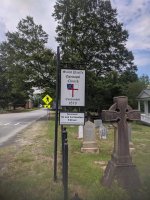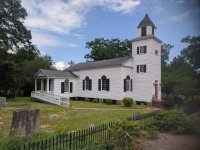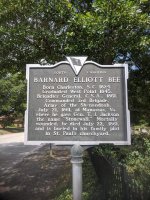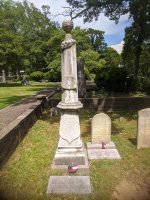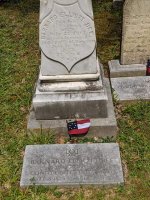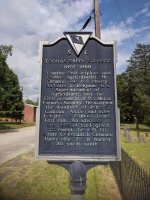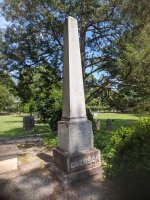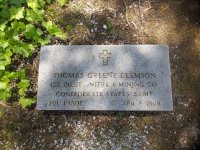- Joined
- Feb 2, 2011
- Messages
- 2,153
JJDESIGNS 1st June 2020 News Update
THE AMERICAN CIVIL WAR
THE FIRST BATTLE OF BULL RUN, 1861.
THE 4[SUP]th[/SUP] VIRGINIA INFANTRY, LIBERTY HALL VOLUNTEERS, Co. I.
The 1[SUP]st[/SUP] Brigade of the Army of the Shenandoah, commanded by Brigadier-General Thomas J. Jackson, earned their legendary nickname at First manassas on 21[SUP]st[/SUP] July 1861. Arriving on the battlefield in time to stem the Federal tide sweeping back the confederate left flank, they gained immortality when General Barnard E. Bee, declared: “Look at Jackson’s Brigade! It stands there like a stone wall!”

Many civil war regiments and the various companies they comprised, tended to be made up of men from the same geographical area or who shared a commom heritage. The Liberty hall Volunteers, Co. I, 4[SUP]th[/SUP] Virginia Infantry, were largely composed of students at Washington College in Lexington. From 1776 – 1798 it was known as the Liberty Hall Academy. These young men obviously proud of their school became known as the Liberty Hall Volunteers, and had already been receiving military training from cadets of the neighbouring Virginia Military Institute.
By the time they were mustered into Confederate service on June 2[SUP]nd[/SUP] 1861, to serve for a period of one year, the men of the Washington College were considered a well-drilled command. The young men however, were to learn quickly that cannonballs and bullets had no respect for academic achievement. At the battle of First Manassas six of the company were killed or severely wounded.
The volunteers wore collarless light blue grey hunting shirts, with dark blue trim, on top of white cotton shirts with collars showing. Trousers were grey with a dark blue stripe.
Members of this company also provided themselves with short bowie knives.

It was shortly before noon when Jackson arrived at the summit of Henry Hill with his 2,000 Virginians. He rapidly grasped the situation and organized his men into a superb defensive position, which the Northern regiments were unable to break down, and in the end were to wear themselves out in their repeated attempts.

On April 14[SUP]th[/SUP] 1862, Company I was reorganized . Forty Nine men from the militia and another eleven transfers from other units were incorporated into the company, which meant it lost much of its original academic flavour.
The 4[SUP]th[/SUP] Virginia served with the Army of Northern Virginia until the end of the war. It was organized along with the 2[SUP]nd[/SUP], 5[SUP]th[/SUP], 27[SUP]th[/SUP] and 33[SUP]rd[/SUP] Virginia Regiments to make up the famous Stonewall Brigade.

Thomas Jonathon “Stonewall” Jackson (January 21 1824 – May 10[SUP]th[/SUP] 1863) became one of the most well known Confederate commanders of the Civil War, after General Robert E. Lee. Jackson played a prominent role in nearly all the military engagements in the eastern theatre of the war, until his death, and had a key part in winning many significant battles.
Military historians regard Jackson as one of the most gifted tactical commanders in U.S. history, and his tactics are still studied today. His death proved a severe setback for the Confederacy affecting not only its military prospects, but also the morale of its army and the general public.
Many thanks
john jenkins
THE AMERICAN CIVIL WAR
THE FIRST BATTLE OF BULL RUN, 1861.
THE 4[SUP]th[/SUP] VIRGINIA INFANTRY, LIBERTY HALL VOLUNTEERS, Co. I.
The 1[SUP]st[/SUP] Brigade of the Army of the Shenandoah, commanded by Brigadier-General Thomas J. Jackson, earned their legendary nickname at First manassas on 21[SUP]st[/SUP] July 1861. Arriving on the battlefield in time to stem the Federal tide sweeping back the confederate left flank, they gained immortality when General Barnard E. Bee, declared: “Look at Jackson’s Brigade! It stands there like a stone wall!”

Many civil war regiments and the various companies they comprised, tended to be made up of men from the same geographical area or who shared a commom heritage. The Liberty hall Volunteers, Co. I, 4[SUP]th[/SUP] Virginia Infantry, were largely composed of students at Washington College in Lexington. From 1776 – 1798 it was known as the Liberty Hall Academy. These young men obviously proud of their school became known as the Liberty Hall Volunteers, and had already been receiving military training from cadets of the neighbouring Virginia Military Institute.
By the time they were mustered into Confederate service on June 2[SUP]nd[/SUP] 1861, to serve for a period of one year, the men of the Washington College were considered a well-drilled command. The young men however, were to learn quickly that cannonballs and bullets had no respect for academic achievement. At the battle of First Manassas six of the company were killed or severely wounded.
The volunteers wore collarless light blue grey hunting shirts, with dark blue trim, on top of white cotton shirts with collars showing. Trousers were grey with a dark blue stripe.
Members of this company also provided themselves with short bowie knives.

It was shortly before noon when Jackson arrived at the summit of Henry Hill with his 2,000 Virginians. He rapidly grasped the situation and organized his men into a superb defensive position, which the Northern regiments were unable to break down, and in the end were to wear themselves out in their repeated attempts.

On April 14[SUP]th[/SUP] 1862, Company I was reorganized . Forty Nine men from the militia and another eleven transfers from other units were incorporated into the company, which meant it lost much of its original academic flavour.
The 4[SUP]th[/SUP] Virginia served with the Army of Northern Virginia until the end of the war. It was organized along with the 2[SUP]nd[/SUP], 5[SUP]th[/SUP], 27[SUP]th[/SUP] and 33[SUP]rd[/SUP] Virginia Regiments to make up the famous Stonewall Brigade.

Thomas Jonathon “Stonewall” Jackson (January 21 1824 – May 10[SUP]th[/SUP] 1863) became one of the most well known Confederate commanders of the Civil War, after General Robert E. Lee. Jackson played a prominent role in nearly all the military engagements in the eastern theatre of the war, until his death, and had a key part in winning many significant battles.
Military historians regard Jackson as one of the most gifted tactical commanders in U.S. history, and his tactics are still studied today. His death proved a severe setback for the Confederacy affecting not only its military prospects, but also the morale of its army and the general public.
Many thanks
john jenkins


